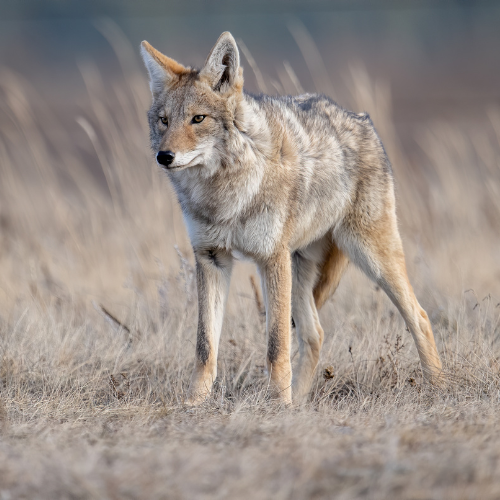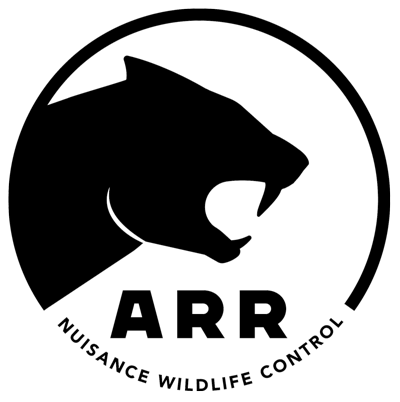At ARR Nuisance Wildlife Control, our expertise in managing wildlife conflicts extends to addressing the challenges posed by a specific animal that has become increasingly noticeable in Central and Southwest Florida. These creatures, known commonly as coyotes, have adapted well to both rural and urban settings, often leading to complex interactions with humans and other wildlife.
The species found in Florida, typically the Eastern Coyote, is a versatile and adaptable animal. This adaptability is a key reason why they have thrived in various environments, including the expanding urban areas of Central and Southwest Florida. While they play a role in the ecosystem, their increasing proximity to human habitats has led to numerous challenges. They are known for their opportunistic feeding habits, which can lead to conflicts with humans, especially in areas where their natural habitats overlap with residential communities.
One of the most significant issues with these animals is their potential to harm pets and livestock. There have been instances where small pets, particularly cats and small dogs, have fallen prey to these predators. They are also known to rummage through garbage, damage property, and can become a considerable nuisance in neighborhoods.
While it might be tempting to address this issue through do-it-yourself (DIY) methods, this approach is often ineffective and can be dangerous. These animals are wild and can be unpredictable, especially when cornered or threatened. Moreover, improper handling and removal can lead to further complications, such as the dispersal of the animals into new areas, potentially exacerbating the problem.
It is also worth noting some lesser-known facts about these creatures that underscore the complexity of dealing with them. They are not purely nocturnal; sightings during the day are not uncommon, especially in urban areas. Another interesting aspect is their communication; they use a variety of vocalizations to communicate with each other, which can sometimes be heard at night. Their diet is incredibly diverse, ranging from small mammals and fruits to garbage, which is why they are often found scavenging in populated areas.
Statistics show a notable increase in their presence in urban areas, a trend observed not just in Florida but across many parts of the United States. This increase can be attributed to various factors, including changes in land use and the reduction in the number of their natural predators.
At ARR Nuisance Wildlife Control, we specialize in humane and effective methods to manage the presence of these animals. Our team of experts is equipped with the knowledge and tools necessary to handle these situations safely and effectively. We understand the importance of balancing the need to protect property and public safety with the consideration for the well-being of wildlife.
Our services include a thorough assessment of the situation, identification of attractants, and implementation of strategies to deter these animals from populated areas. We also offer solutions for securing properties against future intrusions, such as fencing and habitat modification. Our approach is tailored to the specific circumstances of each case, ensuring the best possible outcome for both our clients and the wildlife involved.
The presence of these animals in Central and Southwest Florida presents unique challenges. While they are an integral part of the ecosystem, their increasing interactions with human habitats necessitate professional management. At ARR Nuisance Wildlife Control, we are committed to providing effective, humane solutions to mitigate conflicts between humans and wildlife. By choosing our services, you are ensuring a safe, professional response to any wildlife issues you may face, particularly those involving these adaptable and resilient animals. Contact us today to schedule an inspection.
Frequently Asked Coyote Questions
Q1. Can coyotes adapt to different habitats within Florida?
A1. Coyotes are remarkably adaptable animals, able to thrive in a variety of environments, from dense forests to urban areas. In Florida, they have demonstrated a remarkable ability to adjust to different habitats. Their adaptability is evident in their diet, which varies based on the available food sources in their current habitat. In more urban areas, they might rely on garbage or small animals, whereas, in rural settings, their diet could include rodents and insects. This adaptability is a key factor in their widespread presence across different regions of Florida.
Q2. Do coyotes pose a threat to native wildlife in Florida?
A2. While they play an important role in the ecosystem as predators, coyotes can pose a threat to some native wildlife species in Florida. Their diet often includes small mammals and birds, which can sometimes include endangered or threatened species. In areas where natural prey is scarce, they may turn to easier targets, such as sea turtle nests or rare bird species. This predatory behavior can have a significant impact on the local wildlife population, especially in ecosystems that are already under stress from other environmental factors.
Q3. How do coyotes communicate with each other, and what does it mean?
A3. Coyotes have a complex system of communication that includes a variety of vocalizations such as howls, yips, and barks. These sounds serve multiple purposes, such as maintaining social bonds, warning other coyotes of danger, or signaling their location. The howl, one of their most recognizable sounds, can be a way to call to other members of their group or to signal their presence in a particular territory. Understanding their communication patterns can provide valuable insights into their behavior and social structure, which is crucial for effective management and control strategies.
All Rights Reserved | ARR Nuisance Wildlife Control

